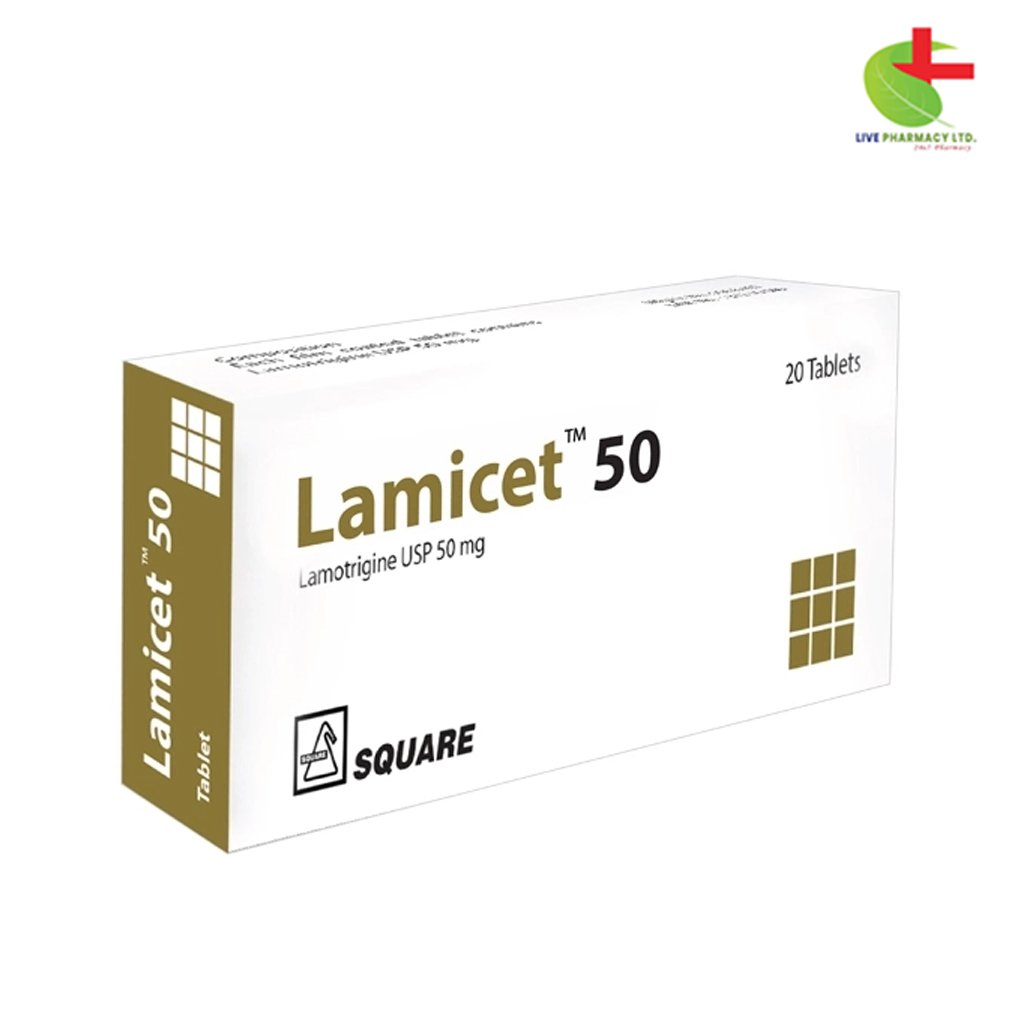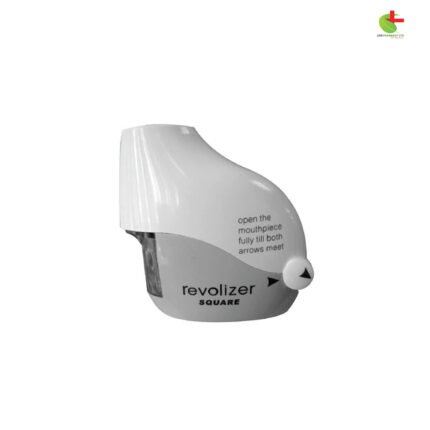Lamicet 50
200.00৳ Strip
- Lamicet: A trusted antiepileptic medication
- Addresses epilepsy and bipolar disorder
- Effectively manages various seizure types
- Mechanism involves stabilizing neuronal membranes and modulating sodium channels
- Precise dosing guidance ensures optimal patient care
 Brand
Brand
|
Square Pharmaceuticals PLC |
|---|---|
 Generics
Generics
|
Lamotrigine |
Indications
Lamicet serves as an antiepileptic drug (AED) prescribed for various conditions, including:
Epilepsy – recommended as adjunctive therapy for patients aged 2 years and older experiencing:
- Partial-onset seizures
- Primary generalized tonic-clonic seizures
- Generalized seizures associated with Lennox-Gastaut syndrome
Additionally, for epilepsy management, Lamicet can be used as monotherapy in patients aged 16 years and older.
Bipolar disorder – indicated for patients aged 18 years and older.
Description
Lamicet, a phenyltriazine antiepileptic, is utilized in treating certain types of epilepsy and bipolar disorder. By inhibiting voltage-sensitive sodium channels, it regulates neuronal membranes, thereby reducing presynaptic excitatory neurotransmitter release, such as glutamate and aspartate.
Pharmacology
Though the precise mechanism of action of lamotrigine remains incompletely understood, it exhibits cellular activities contributing to its efficacy across various conditions. Its actions, akin to phenytoin and carbamazepine, involve inhibiting voltage-sensitive sodium channels and stabilizing neuronal membranes, modulating the release of presynaptic excitatory neurotransmitters.
Dosage & Administration
For epilepsy management:
- Escalation Regimen for Lamotrigine in Patients Older than 12 Years with Epilepsy (Table-1)
- Escalation Regimen for Lamotrigine in Patients Aged 2 to 12 Years with Epilepsy (Table-2)
For bipolar disorder:
- Escalation Regimen for Lamotrigine in Adults with Bipolar Disorder (Table-4)
Interaction
Various medications affect Lamicet concentrations differently, with valproate notably increasing concentrations, while carbamazepine, phenytoin, phenobarbital, primidone, and rifampin decrease concentrations.
Side Effects
Common side effects include dizziness, headache, diplopia, nausea, and rash in adults, while children may experience vomiting, diarrhea, infection, fever, abdominal pain, and tremor.
Pregnancy & Lactation
Lamotrigine falls under Pregnancy Category C and is excreted in human milk. Considering potential adverse reactions, decisions regarding nursing should weigh the benefits against risks.
Precautions & Warnings
Special precautions include discontinuation at the first sign of rash, monitoring for blood dyscrasias, suicidal behavior, ideation, and signs of aseptic meningitis.
Use in Special Populations
Pediatric use is cautioned, with efficacy not established for very young children (aged 1 to 24 months) with epilepsy or for maintenance treatment of bipolar disorder in adolescents (aged 10 to 17 years).
Overdose Effects
Overdose manifestations may include ataxia, seizures, decreased consciousness level, coma, and intraventricular conduction delay.
Therapeutic Class
Lamicet belongs to the primary anti-epileptic drugs category.
Storage Conditions
Recommended storage entails keeping Lamicet in a dry place, below 25°C, and protected from light to maintain its integrity.













Reviews
There are no reviews yet.